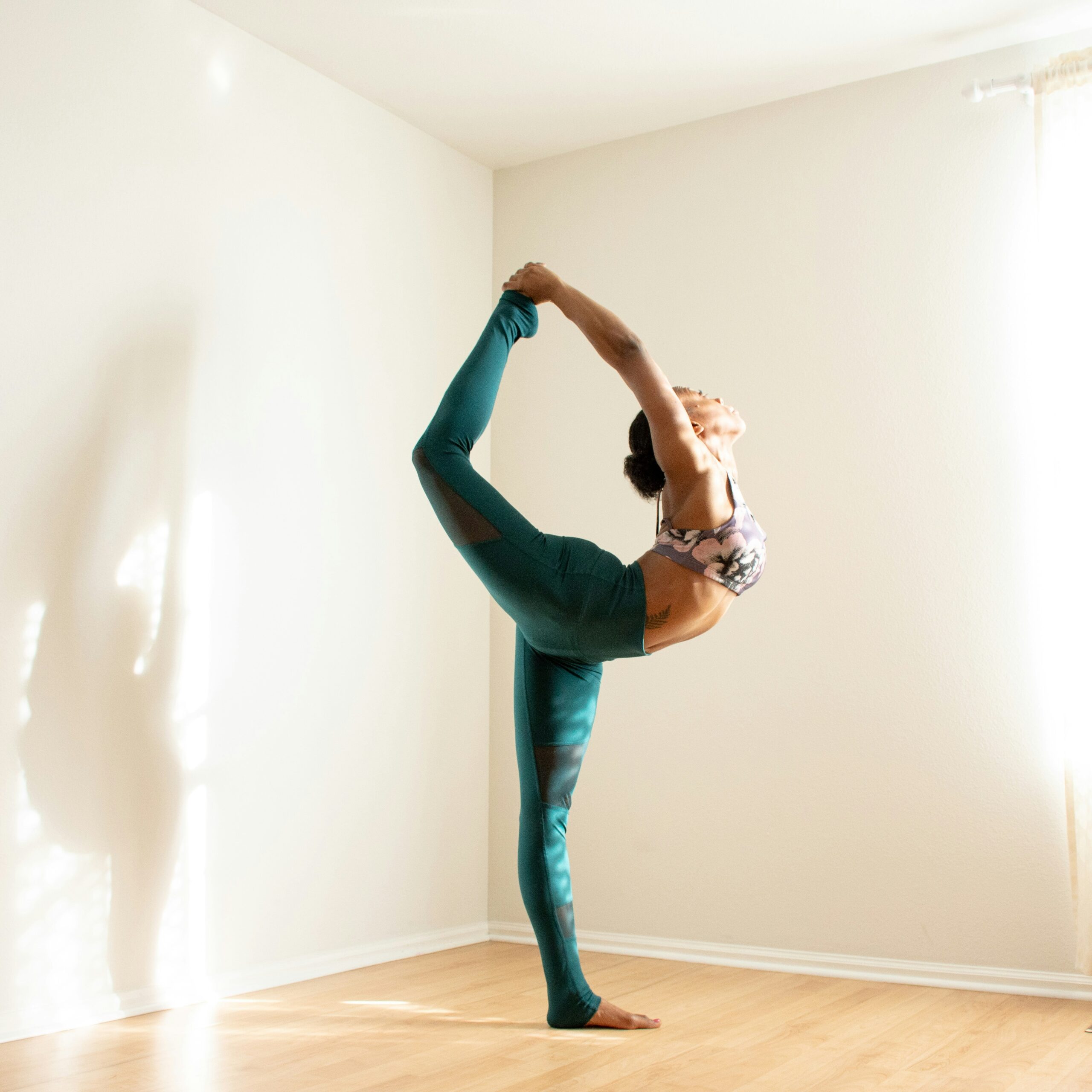Unlocking Your Inner Athlete Through Mindfulness Techniques
In today’s fast-paced world, where distractions lurk around every corner, the quest to enhance athletic performance often feels like navigating a maze. We train our bodies relentlessly, pushing through grueling workouts, but what if I told you that the key to unlocking your inner athlete lies not just in physical prowess but in the power of your mind? Mindfulness techniques have emerged as a transformative tool, enabling athletes to harness their mental faculties and elevate their game. Intrigued? You should be.
The Intersection of Mindfulness and Athletic Performance
Mindfulness, at its core, is the practice of being present and fully engaged in the moment. It’s about observing thoughts and feelings without judgment. Now, you might be wondering how this relates to sports, where the focus is often on physicality and technique. Well, it struck me that the most elite athletes often highlight mental fortitude as the cornerstone of their success. Studies suggest that mindfulness can enhance focus, reduce anxiety, and improve overall performance—traits that are invaluable on the field, court, or track.
Consider the legendary tennis player Novak Djokovic, who openly attributes his success to mindfulness practices. He incorporates meditation and breathing exercises into his routine, allowing him to maintain composure during high-pressure matches. Imagine facing an opponent who’s smashing serves at 130 mph, and instead of panicking, you’re calmly centered, ready to respond. That’s the power of mindfulness.
Why Mindfulness Matters for Athletes
Engaging in mindfulness techniques can yield a plethora of benefits for athletes, both amateur and professional. Some of these include:
- Improved Focus: Mindfulness trains the brain to concentrate, which is essential during competitions.
- Increased Resilience: Athletes learn to bounce back from setbacks and maintain a positive mindset.
- Reduced Anxiety: By being present, athletes can alleviate performance-related stress.
- Enhanced Enjoyment: Mindfulness fosters a deeper connection to the sport, improving overall satisfaction.
These benefits aren’t just platitudes; they’re backed by research. For example, a study published in the Journal of Sport and Exercise Psychology found that athletes who practiced mindfulness reported lower levels of anxiety and more positive emotions during competitions. It seems that cultivating a mindful approach can indeed level the playing field, regardless of the sport.
Getting Started with Mindfulness Techniques
If you’re convinced—like I was when I first stumbled upon the concept—that mindfulness can enhance athletic performance, the next step is to dive in. Here’s how to get started:
1. Mindful Breathing
Breathing may seem like a mundane task, but it’s one of the most powerful tools in mindfulness. Mindful breathing involves focusing on your breath, observing each inhale and exhale. Here’s a simple exercise to try:
- Find a quiet space where you won’t be disturbed.
- Close your eyes and take a deep breath in through your nose, counting to four.
- Hold your breath for a count of four.
- Exhale slowly through your mouth for a count of six.
- Repeat this cycle for five to ten minutes.
As you breathe, you may notice your mind wandering (it happens to the best of us!). Acknowledge those thoughts and gently bring your focus back to your breath. This practice can help center you before a big game or workout.
2. Body Scan Meditation
Another effective mindfulness technique is the body scan meditation, which can help deepen your awareness of physical sensations. Here’s how to do it:
- Lie down comfortably, either on your back or in a seated position.
- Close your eyes and take a few deep breaths.
- Start by focusing your attention on your toes, noticing any sensations you feel.
- Gradually move your focus up through your legs, torso, arms, neck, and head.
- Spend a few moments on each body part, releasing any tension you may encounter.
This technique not only promotes relaxation but also helps athletes become more attuned to their bodies, which is crucial for injury prevention and performance enhancement.
3. Visualization Techniques
Visualization is a powerful tool used by many top athletes. It involves creating a mental image of yourself succeeding in your sport—whether it’s making that perfect jump shot, crossing the finish line first, or executing a flawless routine. Here’s a step-by-step guide to get you started:
- Find a quiet space and close your eyes.
- Take a few deep breaths to center yourself.
- Visualize a successful performance in your sport. Imagine every detail: the sounds, the sights, the feelings.
- Focus on the emotions you would feel during this success.
- Practice this visualization regularly, especially before competitions.
Some athletes even claim that visualizing success can be as effective as physical practice. Personally, I still remember the day I visualized myself completing a marathon, and when race day came, it felt like I had already conquered the distance in my mind.
Mindfulness in Practice: Real-Life Examples
To truly appreciate the impact of mindfulness on athletic performance, let’s look at some real-life examples. Besides Djokovic, many athletes across various sports have incorporated these techniques into their training.
1. NBA Stars and Mindfulness
Basketball players like Kobe Bryant and Stephen Curry have openly discussed the importance of mental training. Bryant famously practiced visualization and meditation, which he credited for helping him perform under pressure. Similarly, Curry embraces mindfulness to maintain his focus during critical moments, allowing him to sink those game-winning three-pointers with remarkable consistency.
2. The NFL’s Mindfulness Movement
The NFL has also begun to recognize the benefits of mindfulness. Teams like the Seattle Seahawks have integrated mindfulness practices into their training regimens. Players engage in meditation and breathing exercises to improve focus and manage stress. It’s not uncommon to hear players talk about the mental aspect of the game, emphasizing that mastering one’s mind can be just as crucial as honing physical skills.
3. Endurance Athletes and Mental Toughness
Endurance athletes, such as marathon runners and triathletes, often face mental battles during their grueling events. Many turn to mindfulness techniques to help navigate the discomfort and fatigue. A study conducted with marathon runners found that those who practiced mindfulness reported improved race times and greater enjoyment of the experience. It seems that a calm mind can indeed lead to better performance.
Challenges and Misconceptions
While the benefits of mindfulness are clear, it’s important to address some common misconceptions. Many people believe that mindfulness is an esoteric practice reserved for yogis and meditation gurus. In reality, it’s accessible to anyone—athletes included. You don’t need to sit cross-legged on a mountaintop to reap the rewards.
Another misconception is that mindfulness is a quick-fix solution. It’s not. Like any skill, it takes time and practice to cultivate. You might feel like an imposter during your first few sessions, battling an overactive mind (I know I did). But don’t let that deter you. The key is consistency; even five minutes a day can make a difference.
Incorporating Mindfulness into Your Routine
So, how can you seamlessly integrate mindfulness techniques into your athletic routine? Here are some practical tips:
- Start Small: Begin with just a few minutes of practice each day and gradually increase as you feel comfortable.
- Be Consistent: Consistency is crucial. Try to incorporate mindfulness into your warm-up or cool-down routine.
- Set Intentions: Before a workout or competition, set a mindful intention for what you want to achieve.
- Reflect: After each session, take a moment to reflect on your experience. What worked? What didn’t?
Remember, mindfulness is a personal journey. It’s about discovering what resonates with you. So don’t be afraid to experiment with different techniques until you find your sweet spot.
The Role of Coaches and Support Systems
As the sports landscape evolves, the role of coaches is also shifting. More and more coaches are recognizing the importance of mental training and mindfulness in their athletes’ development. It’s no longer just about physical drills; it’s about nurturing the mind as well.
Some teams have started to hire mental performance coaches, who specialize in integrating mindfulness techniques into training programs. These professionals work alongside athletes to develop personalized mindfulness strategies, ensuring that the mental side of the game is as robust as the physical.
In my experience, having a supportive environment can make all the difference. When athletes feel encouraged to explore mindfulness, they’re more likely to embrace it as a valuable tool. So, whether you’re a coach or an athlete, fostering this culture can lead to incredible results.
Conclusion: The Path to Unlocking Your Inner Athlete
As we wrap up this exploration of mindfulness techniques and their impact on athletic performance, it’s clear that the journey is as important as the destination. Unlocking your inner athlete isn’t solely about intense training sessions or perfecting your technique; it’s also about cultivating a mindset that embraces awareness, resilience, and focus.
So, the next time you lace up your sneakers or step onto the field, remember that your mind is just as powerful as your body. Mindfulness techniques can help you navigate the ups and downs of competition, enabling you to perform at your best. Embrace the present moment, trust in your abilities, and watch as you unlock the full potential of your inner athlete.
In the end, it’s not just about winning or losing; it’s about enjoying the journey, finding joy in the process, and becoming the best version of yourself—both on and off the field. Who knows? You might even find that mindfulness enhances not only your athletic performance, but your life as a whole.




